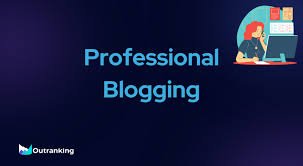How to Choose the Right Blogging Platform for Your Website
How to Choose the Right Blogging Platform for Your Website Choosing the right blogging platform is one of the most important decisions you’ll make when starting your blog. The platform you select will dictate the functionality, design, and ease of use for your blog. Whether you’re a first-time blogger or a seasoned pro looking to switch platforms, it’s essential to choose a platform that aligns with your goals, budget, and technical skill level. In this post, we’ll guide you through the factors to consider when choosing a blogging platform and review some of the most popular options available today. With this information, you’ll be able to make an informed decision and set yourself up for blogging success. 1. Consider Your Goals and Needs Before diving into the different blogging platforms available, it’s important to define your goals and needs for your blog. Are you blogging for fun, to showcase your hobbies, or to grow a business? Understanding your objectives will help you choose a platform that supports those goals. Questions to Ask Yourself: Having clear goals will help you assess which blogging platform is right for you. 2. Easy to Use vs. Advanced Customization Some blogging platforms are beginner-friendly, with intuitive interfaces and easy-to-use features, while others offer more advanced customization options that require technical expertise. If you’re new to blogging or don’t have coding skills, you’ll likely want a platform that is easy to use and doesn’t require much technical knowledge. On the other hand, if you’re a web developer or have some experience with customizing websites, you might want a platform that allows for more control over your site’s design and features. Beginner-Friendly Platforms: More Advanced Platforms: Think about your level of technical expertise and the amount of time you’re willing to spend learning a platform. This will help you determine which option is best for your needs. 3. Customization and Design Flexibility One of the biggest advantages of blogging is the ability to customize your site to reflect your personal style or brand. If you care about design and want your blog to look unique, it’s crucial to choose a platform that offers ample customization options. Platforms with Good Customization Options: If you don’t have web design experience, platforms like Squarespace or Wix are excellent choices, as they allow you to customize your blog without needing to write code. However, for those with advanced web design skills, WordPress.org will provide the most flexibility. 4. Cost Considerations While some blogging platforms are free, others come with monthly or yearly fees. It’s important to think about your budget and what you’re willing to invest in your blog. Free Platforms: Paid Platforms: While free platforms are attractive, they often come with limitations, such as ads on your site or lack of customization. If you’re serious about blogging, investing in a paid platform will give you more control and better scalability. 5. SEO Features and Traffic Potential If growing your blog’s traffic is a priority, you’ll want a platform that supports SEO (Search Engine Optimization) and helps you get your content in front of your audience. SEO features include things like keyword optimization, meta descriptions, SEO-friendly URLs, and mobile responsiveness—all of which are critical for ranking on search engines. SEO-Friendly Platforms: Be sure to check if the platform offers SEO tools that allow you to optimize your posts. Keep in mind that some platforms (like WordPress.org) provide more flexibility with SEO plugins, while others (like Medium) offer fewer options. 6. Monetization Options If you plan to monetize your blog in the future, it’s essential to choose a platform that supports your monetization goals, whether that’s through ads, affiliate marketing, or selling products. Platforms with Strong Monetization Options: Some free platforms (like Medium and Blogger) have limitations when it comes to monetization, so if you’re serious about earning money from your blog, a paid platform with monetization flexibility is a better choice. Conclusion Choosing the right blogging platform is a critical decision that can impact your blogging journey. By considering your goals, technical skills, design preferences, and budget, you’ll be able to find a platform that suits your needs. Whether you’re a beginner looking for simplicity or a seasoned blogger seeking advanced customization, there’s a platform out there that can help you grow and succeed. Some popular options include: No matter which platform you choose, the key to blogging success is creating high-quality, engaging content. Once you’ve chosen the right platform for your needs, focus on building your blog, promoting your posts, and engaging with your audience. Related Tags:




















